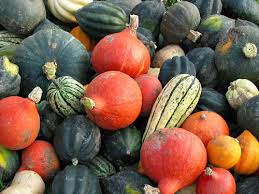 So…you want to try a squash casserole, or maybe even a savory soup? But then…the choices begin. There are two types of squash, soft skinned a/k/a summer squashes and tough thick skinned gourd squashes a/k/a winter squash. Your typical summer squashes are zucchini and yellow squash. Winter squashes have much more variety and are very diverse, think pumpkins, butternut squash and acorn squash. Now, on to what to use them for… While most all squash are delicious baked, that’s about where the similarities end. Each type of squash has a uniqueness, while some can make delicious desserts, others make savory soups, and still more can even be substituted for pasta! I can go on and on about squash, but we know the real reason you’re reading this…is just how exactly DO I cut the dang winter squash? Let us continue on then, so you can get on to that delicious recipe for dinner tonight. Here are a few tips and tricks, along with some of our favorite recipes for each type of squash.
So…you want to try a squash casserole, or maybe even a savory soup? But then…the choices begin. There are two types of squash, soft skinned a/k/a summer squashes and tough thick skinned gourd squashes a/k/a winter squash. Your typical summer squashes are zucchini and yellow squash. Winter squashes have much more variety and are very diverse, think pumpkins, butternut squash and acorn squash. Now, on to what to use them for… While most all squash are delicious baked, that’s about where the similarities end. Each type of squash has a uniqueness, while some can make delicious desserts, others make savory soups, and still more can even be substituted for pasta! I can go on and on about squash, but we know the real reason you’re reading this…is just how exactly DO I cut the dang winter squash? Let us continue on then, so you can get on to that delicious recipe for dinner tonight. Here are a few tips and tricks, along with some of our favorite recipes for each type of squash.
Winter Squashes:
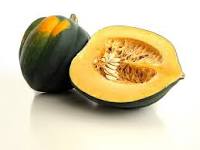 Acorn Squash
Acorn Squash
For baking:
Get a good, large knife and work slowly and carefully so you don’t lose a finger! Start by piercing the squash in the middle and push your knife all the way through vertically until it hits the cutting board, then slide the knife down, slicing the squash open.
If baking the squash, the skin will soften, but stays firm enough to act like a bowl for a mess free transfer!
Once you get your squash halved, scoop out all the seeds.
To use in a recipe:
First halve the squash and remove the seeds. Cut a small slice off the bottom of the squash so it can sit on your cutting board.
Use a vegetable peeler to remove the peel from the ridges.
Cut a wedge off the squash, slicing through the valley.
Turn the wedge and finish peeling.
Before slicing off another wedge, peel the exposed edge that was left on the half-squash. Then, slice through the valley again and repeat on the next wedge.
Ready to test out one of these techniques? Make sure to try one of these delicious Acorn Squash recipes, for a family friendly Roasted Acorn Squash and Gorgonzola Pizza or healthy Oven Roasted Brussel Sprouts and Acorn Squash or my favorite, the no description necessary Vanilla Bourbon Baked Acorn Squash.
Storing Acorn Squash
The squash’s sturdy exterior allows it to be stored at room temperature for up to one month, or longer if kept in a cool, dark place. For best results, Acorn Squash should be should be kept at temperatures less than 55. You’ll see best storage results when you stash squash in a cool, dry spot. For best results, store at 50º to 55º F with relative humidity of 60 to 70 percent. Higher temperatures cause the flesh to become stringy. Avoid storing squash in higher humidity, which can promote rot.
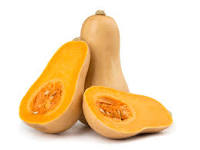 BUTTERNUT SQUASH
BUTTERNUT SQUASH
Butternut squash is one of the sweetest of the winter squashes, and it’s the easiest to peel and prepare for cooking.
For baking & in recipes:
To peel butternut squash, use a chef’s knife to trim off the top and the bottom of the squash. Next, cut it in half crosswise.
Then cut the larger bottom section in half lengthwise.
You can now scoop out the seeds using a soup spoon.
Use a sharp peeler to remove the tough skin. You can also cut away the skin with a paring knife.
Cut the squash into 1- to 1 1/2-inch-thick slices or large dice. The squash is now ready to be cooked the way you prefer.
Storing Butternut Squash
The squash’s sturdy exterior allows it to be stored at room temperature for up to one month, or longer if kept in a cool, dark place. You’ll see best storage results when you stash squash in a cool, dry spot. For best results, store at 50º to 55º F with relative humidity of 60 to 70 percent. Higher temperatures cause the flesh to become stringy. Avoid storing squash in higher humidity, which can promote rot.
So…now that you know how to prepare it, what will you use it for? I have a few favorites…classic Caramelized Butternut Squash Roasted Butternut Squash, a healthy, simple recipe of Roasted Fall Vegetables alone or on top of this Pizza, or for a winter warm up- Butternut Squash Soup!
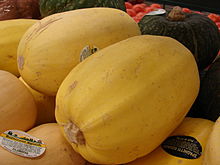 SPAGHETTI SQUASH
SPAGHETTI SQUASH
Baking and other recipes
Like all winter squash, spaghetti squash requires some time in the oven before it becomes tender enough to eat. The quickest way to get this side dish on the table is to cut the squash in half and cook it face-down in a baking dish. I like to add a little water to the pan or cover it with foil to help things along; the steam helps keep surfaces of the squash from drying out and makes the resulting strands of squash incredibly tender.
You can also roast a whole spaghetti squash for about an hour, making cutting in half easier.
Preparation for recipes w/ Squash Bowls
Using a sharp knife, poke a few small slits in the squash skin; poke in a dotted line along where you plan to slice the squash in half.
Microwave squash 5-6 minutes; cool slightly.
Place squash on cutting board with flattest part down – usually an end. Slice along your ‘dotted line’ of slices.
Since the squash will be hot, use a rubber glove to hold the squash half, and scrape out the seeds before roasting.
Roast in oven for the sweetest squash flavor and the softest noodle texture (or continue to microwave until soft.)
Easy Spaghetti Squash Pasta Spaghetti Squash Gremolata Parmesan Squash Chips
Thai Summer Vegetable Curry Garden Veggie Pasta in a Creamy Vodka Sauce Zucchini Pizza Bites Zucchini and Pepper Gratin
Summer Squash is much easier to use and handle…and the possibilities are endless! Summer squash consists of several varieties, but most common are yellow squash and zucchini.
Summer squash should always be stored clean and dry in a cool environment, refrigerate for best results if you do not planning on using in the next day or two when bringing it home. Make sure to remove any leaves that may still be on the fruit, and separate any pieces that show signs of bruising from the rest.
Most can use yellow squash and zucchini interchangeably, simply adjust according to your recipe and taste. Yellow squash has a lightly sweet flavor, and zucchini has a mildly nutty flavor. Here are our all time favorite summer squash recipes.
Summer Squash Pickles Vegetable Tian Zucchini Pepper Gratin Zucchini Pasta Pasta Primavera Zucchini Pizza Bites Parmesan Squash Chips Garden Veggie Pasta in a Creamy Vodka Sauce Thai Summer Vegetable Curry
More recipes coming soon! Share your favorites with us! Have tips or tricks? We’d love to hear!
Share the SWEET-ness. Like and follow us! We are Sweet Basil Farm & Gardens on Facebook. Look for us on Pinterest, Youtube, Instagram, Google+ and Twitter. Sweet Basil Farms is an 80 acre working farm, consisting of large vegetable, fruit and herb gardens, fruit orchards and livestock, where we put great emphasis on natural gardening, growing and livestock management practices. We are proud members of Georgia Grown and the American Poultry Association. Our commitment to the communities we serve is to give back to each. We are honored to be Partners with Paulding County Schools, Cherokee County Schools, Douglas County Schools and PTA and school Partnerships in many more Metro Atlanta Counties. We also breed and sell poultry, pet pigs, pygmy goats and over 300 varieties of bearded irises and so much more.
An 1840’s General Store situated on our property, is used as our on site Farmer’s Market. The old General Store was once the central hub for a railroad community, and served many important roles in the community of Goggans, even a United States Post Office until the 1960’s. It later served a new, bigger community purpose, inspiring our Farmers Market To You program to be born. This building is registered as a Historical site, and is adjacent to the old “Doctor’s Building”, which is rumored to have served as a Courthouse, among other things. The history on our property, rich with farming and community purpose, inspired us to serve our community in a new and exciting way.
We, both David and I, have always had a passion for growing flowers and plants, rooted from wonderful Grandmothers’ teachings. We, like everyone, began to make a more conscience effort to eat healthy and naturally grown fresh food. Since we have 80 acres, we began by adding a “small” acre and a half vegetable garden. When people began driving an hour or two, just to buy our tomatoes and cucumbers, we realized there was a real need in many communities for families like ours….and Farmers Market To You was born. We have been blessed to expand in to several of our neighboring communities, with our Farmers Market To You Market Basket program…and touch and reach families along the way. We donate food and cash to needy families, food ministries, PTA’s, churches and other vital community service organizations in each of the communities we serve.
This recipe post created by Tisha Johnson Matthews, of Sweet Basil Farm & Gardens. Special thanks to J. David Matthews, of Barnesville, Georgia for support and patience with all that I try and test. To see other fantastic recipes, or to find more healthy and delicious recipes, subscribe to our blog and follow us on Social Media.
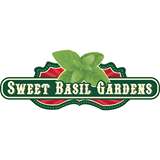
Reblogged this on sweetbasilfarm.
LikeLike